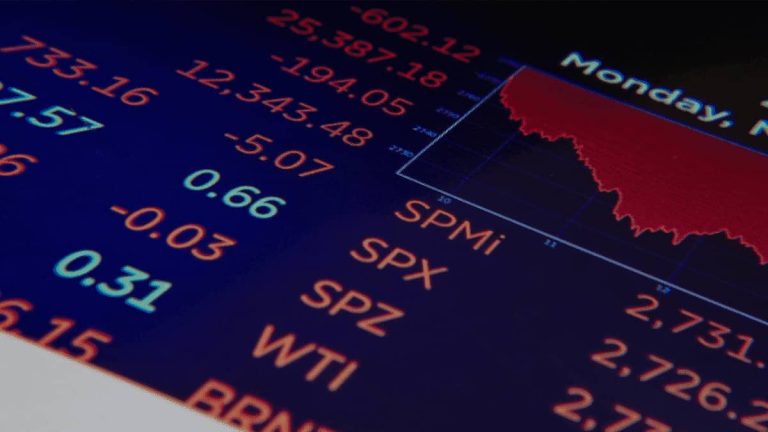Mini SP 500, short for E-mini S&P 500 Futures, is often referred to as ES futures or ES mini. It’s one of the two variations of S&P 500 futures. The other variation, Micro E-mini S&P 500 Futures, is commonly known as micro ES or micro SP500, and it’s essentially a smaller version of the mini ES.
In this article, we’ll explore the disparities between micro and mini SP500 Futures, focusing on their trading conditions like margin requirements. Here are the key points covered:
- Mini S&P500 contract value is about $250,000, while a Micro S&P500 contract is $25,000.
- Minimum margin for Mini S&P futures is $1,298, but for Micro E-mini S&P futures, it’s just $130.
Understand Mini & Micro SP500
Similar to Dow Futures, there are Mini and Micro contracts available for S&P Futures. Given the prefixes “Mini” and “Micro” in their names, it’s not hard to guess that the contract size of the two futures are different. The contract size of micro ES is ten times that of ES mini.
The table below includes a column for contract value (calculated based on the S&P 500 index traded at 5,000 point) to provide a more intuitive comparison and display of the sizes of the two contracts:
| Symbol | Contract Size | Contract Value | |
|---|---|---|---|
| ES Futures | ES | $50 x Index Point | $250,000 |
| Micro ES Futures | MES | $5 x Index Point | $25,000 |
The value of a single ES futures contract is approximately $250,000. Despite its moniker “mini,” it holds considerable value. For most individual investors, this amount is not only significant but could also be deemed substantial.
As the value of ES futures has risen alongside the S&P 500 Index, the CME introduced Micro E-mini contracts, which are one-tenth the size of their Mini counterparts. The introduction of Micro E-mini contracts by the CME is a response to the growing value of Mini SP500 contracts, which have become increasingly substantial alongside the S&P 500 index.
Mini & Micro SP500 Connection
1. Price Movement
Although Mini SP500 and Micro SP500 are two separate futures contracts that trade independently, they share the same underlying asset (ten micro contracts equal one mini contract).
As a result, their price movements are typically identical. Any discrepancies that arise present arbitrage opportunities, and arbitrage trading quickly eliminates price differences. In the real-time quote screenshot below, ES represents the ES futures, while MES represents the micro ES futures, and their quoted prices are the same.
2. Settlement Date
Both ES mini and Micro ES futures are quarterly contracts, available in March, June, September, and December of each year. The expiry and settlement date for these contracts is the third Friday of the last month of the quarter. For example, in the case of the June 2023 contract, the expiry date is June 21st.
When discussing Mini SP500 or Micro SP500, unless specifically stated otherwise, it generally refers to the front-month contract – the contract with the settlement date closest to the current date.
As of April 2024, the front-month contract is the June 2024 contract. The screenshot from the CME website below illustrates ES mini quotes, with approximately 99% of the market volume trading in the June contract, making it the front-month contract and the lead contract.
3. Trading Hours
ES futures trading hours are the same as the trading hours of Micro ES futures, with trading available 23 hours a day, five days a week. Below are the trading hours in US Eastern Time:
- Opening Time: Sunday, 6:00 PM
- Closing Time: Friday, 5:00 PM
- Session Break: Daily, 5:00 PM – 6:00 PM
ES Mini Margin Requirement
After understanding the similarities between ES futures and Micro ES futures, let’s now explore their differences. First is the margin requirement for trading, a crucial factor determining the entry barrier of trading. Similar to the contract value, the margin requirement for ES mini is significantly higher.
The margin requirements for ES futures vary depending on whether the position is traded intraday or overnight. Intraday trading refers to positions opened and closed between 09:00 and 16:00 EST, while any trades conducted outside of this time frame are considered overnight trading.
Mini SP500 Margin Requirement for Intraday Trading
- Initial Margin: $1,298
- Maintenance Margin: $1,168
To initiate a position in ES Mini futures, traders need an initial margin of $1,298, and the account equity must be maintained above $1,168 to avoid a margin call.
Although the initial margin of $1,298 may be challenging for many individual investors, it represents only about 0.5% of the contract value, which stands at $250,000.
Mini SP500 Margin Requirement for Overnight Trading
- Initial Margin: $12,980
- Maintenance Margin: $11,800
The margin requirement for overnight trading of ES Mini futures is ten times higher than for intraday trading. With an initial margin requirement of $12,980, it is entirely beyond the reach of a regular individual trader.
It’s essential to note that margin requirements for ES futures are determined by the CME and futures brokers and may be adjusted periodically based on market volatility. Additionally, margin requirements may vary among different futures brokers.
The margin requirements provided in this article are typical margin requirements from US futures brokers when the S&P 500 index is at 5000 points.
Micro SP500 Margin Requirement
Since the contract size of Micro ES futures is one-tenth of that of Mini ES futures, the margin requirement for Micro ES is naturally one-tenth of that of Mini ES:
Micro SP500 Margin Requirement (Intraday Trading)
Initial Margin: $130 | Maintenance Margin: $117
Micro SP500 Margin Requirements (Overnight Trading)
Initial Margin: $1,298 | Maintenance Margin: $1,180
With an intraday margin requirement of $130, it falls within the realm of retail trading. However, the tenfold difference in margin requirements between intraday and overnight trading may pose challenges for small-capital investors.
It’s important to note that margin requirements for Micro ES futures may vary among different futures brokers, so it’s essential to confirm with your broker.
Seeking an even lower threshold method to trade the S&P 500? Begin trading S&P 500 with a margin as low as $1 through CFDs. Click on 「Exploring US500 and SPX500: Beginner Guide to S&P 500 CFD」 to learn more details.
Micro ES Futures Tick Value
As shown in the screenshot below, both mini SP500 and micro SP500 are quoted with two decimal places with the same tick of 0.25 index pionts. However, due to the difference in contract size, the tick value of the two futures are different:
- ES futures tick value = (50 × 0.25) = $12.5
- Micro ES futures tick value = (5 × 0.25) = $1.25

Currently, the S&P 500 is trading around 5000, with an average daily volatility of approximately 1%, equivalent to 50 index points. Therefore, the average daily profit and loss (PnL) for a Mini SP500 futures contract would be ($12.5 × 50) = $625, whereas for a Micro SP500 contract, it is ($1.25 × 50) = $62.5.
From a market volatility risk perspective, many individual investors can easily withstand the risk associated with trading Micro SP500 futures.
Trading Cost for S&P 500 Futures
1). ES Futures Trading Cost
The trading cost for ES futures encompass exchange fees and brokerage fees:
- CME exchange execution and clearing fees: $1.38 per contract
- Brokerage trading fees: $1.50 per contract
These fees are charged for each side of the trade, meaning they apply separately to both opening and closing positions of futures contracts.
Therefore, factoring in both opening and closing trades, the total trading cost for one round turn of Mini S&P500 trading is [(1.38 x 2) + (1.50 x 2)] = $5.76
2). Micro ES Futures Trading Cost
The exchange fee for Micro SP500 is $0.35, and the brokerage fee is $0.50, resulting in a total cost of $1.70 for a round-turn trade of one contract.
At first glance, the cost for Micro SP500 appears cheaper than that of Mini SP500. However, when comparing based on the same trading value, the cost for Mini SP500 is only $5.76, whereas for Micro futures, it amounts to $17.
From the trading cost perspective, mini SP500 is more cost-effective. Trading one ES mini contract is equivalent to trading ten micro contracts. The commission fees for futures may vary depending on the brokerage, and the amounts mentioned in this section are typical fees for trading with US futures brokers.
Trading ES Futures and Micro ES
The Mini SP500, with a value of approximately $250,000, has an intraday margin requirement of $1,298 and an overnight margin requirement as high as $12,980. Therefore, the primary participants are institutions and professional investors.
In contrast, the Micro SP500, with a value of around $25,000, has an intraday margin requirement of only $130 and an overnight margin requirement of $1,298, making it accessible to many individual investors for investing or speculating on the S&P 500 index.
For traders seeking a method to trade with lower margin requirements, S&P 500 CFDs offer another option with a minimal margin requirement as low as $1. Read the article below to learn more details.






